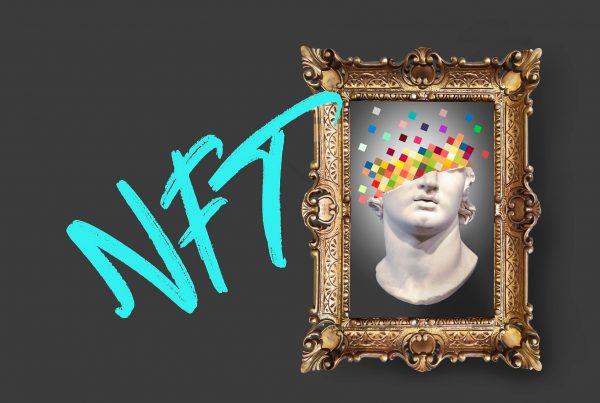
Blockchains have developed in layers – from Layer 1 platforms like Bitcoin and Ethereum to Layer 2 solutions scaling those networks, and now, the emergence of Layer 0 blockchains.
Before we explore the unique characteristics of Layer 0 blockchains, let’s briefly review the commonly known layers in the blockchain ecosystem:
Layer 1: This is the base layer where the core blockchain protocol operates, handling tasks like consensus and transaction processing. Layer 1 blockchains, like Bitcoin and Ethereum, lay the groundwork for decentralized networks. They consist of consensus algorithms, cryptographic techniques, and distributed ledger technologies, which provide the core infrastructure for a secure and decentralized system.
Layer 2: These are solutions built on top of Layer 1, aiming to improve scalability, privacy, or other features. Layer 2 solutions, such as Lightning Network and Polygon, build upon Layer 1 blockchains to enhance scalability, efficiency, and user experience. They enable off-chain transactions and smart contract execution, reducing on-chain congestion and lowering fees for users.
Now, you may be wondering, what on earth is Layer 0, then? Layer 0, often overlooked, refers to the underlying networking and communication infrastructure that supports and connects the nodes in a blockchain network. It’s like the roots of a tree or the foundation of a building – essential but hidden from plain sight.
Layer 0, or “settlement layer”, blockchains are designed from the ground up to serve as the foundation for other blockchains and decentralized networks to be built upon. They offer a new level of interoperability, scalability, and security that past-generation blockchains could only dream of achieving. Instead of focusing on any particular use case, layer 0 blockchains provide the infrastructure needed to support a wide range of innovative decentralized applications.
In this article, we will compare four blockchains, which are supposed to be the best Layer 0 blockchains in many ways: Venom, Avalanche, Cosmos, and Polkadot. We will see the advantages and disadvantages of blockchains against each other and learn about their potential limitations. These four blockchains have different adoption trends and key features.
After reviewing the different use cases and other technical aspects of Layer 0 blockchains, everyone can come to a decision on which one to choose to use, build on or invest in.
Overview
Rather than forking from an existing chain, Layer 0 blockchains start from scratch with a custom architecture optimized for speed, cost-efficiency, and flexibility.
By providing multi-protocol support, these networks can act as bridges between different blockchain ecosystems, enabling seamless communication and interoperability. This is a game-changer in the ever-growing blockchain universe, as it breaks down barriers and fosters collaboration between projects and communities.
These advanced algorithms ensure that information spreads quickly and efficiently across the network without overloading nodes or causing unnecessary delays. They address pain points like slow transaction speeds, high gas fees, and siloed networks.
The key innovation of Layer 0 blockchains lies in their unique network topology. Unlike traditional blockchains, which rely on a monolithic network, Layer 0 blockchains employ a modular approach. This design separates the network layer from the consensus layer, giving developers the flexibility to build highly customizable solutions tailored to specific use cases.
Interoperability
One of the biggest obstacles preventing widescale blockchain usage is the lack of interoperability between different blockchain networks. Currently, blockchain platforms like Ethereum, Bitcoin, and others exist in closed-loop silos and cannot communicate with each other. Layer 0 blockchains aim to change that by creating a foundational “base layer” that allows various blockchains to interoperate seamlessly.
The best Layer 0 blockchains that have reached a growing ecosystem with different customizable solutions are:
You may have heard of these blockchain platforms and some of the dApps in their ecosystem before. Why should we choose one over the other? They all have different ways to achieve scaling and interoperability. If you are a developer or an investor, we will talk about many things to consider.
Comparison of Venom, Avalanche, and Other Layer 0 Blockchains
Venom is a blockchain that offers developers maximum customizability at all levels of the blockchain. This allows for more freedom to build on the platform and create a wider range of solutions. Venom uses TVM instead of EVM to achieve this.
As the first licensed blockchain foundation by the Abu Dhabi global market,, Venom is already ready for potential regulations and frameworks from governments. This means that even when competitors in the industry are disrupted by any legal problem, Venom will comply with legal obligations and will not be negatively affected by regulatory decisions. The fact that Venom is licensed also puts it ahead of its competitors to be the ultimate enterprise blockchain working with country ministries, major financial institutions, CBDCs, etc.
Venom provides its high-level scalability capability with the Dynamic Sharding system it uses. Thanks to this system, the Venom blockchain has a finality time of 0.2 – 0.3 seconds, TPS of 100,000, and an average transaction fee of $0.0002. This great level of scalability and speed is achieved with the help of dynamic sharding as well as an eco-friendly PoS consensus mechanism.
Avalanche is a platform for launching decentralized finance applications and enterprise blockchain deployments in one interoperable, scalable ecosystem.
In the Avalanche ecosystem, subnets are the building blocks that allow developers to create bespoke blockchain solutions. By using subnets, developers can tailor their projects to specific use cases, ensuring that the end product is a perfect fit for their intended audience. This level of customization is truly unique among blockchain platforms and sets Avalanche apart from its peers.
The Avalanche Bridge (previously known as the “Avalanche-Ethereum Bridge”) is an innovative solution that allows users to seamlessly transfer assets between Avalanche and other blockchain networks, such as Ethereum. By fostering interoperability between these platforms, the Avalanche Bridge is instrumental in driving adoption and making the world of DeFi more accessible to everyone.
Cosmos is building an ecosystem that allows blockchains to interoperate and scale. Think of it as an ‘Internet of Blockchains’.
Dubbed the ‘SDK of Blockchains’, the Cosmos Network allows developers to build their own blockchains and connect them seamlessly. The heart of Cosmos is the Cosmos Hub, a blockchain that connects other blockchains and allows coins/tokens and data to flow between them with ease.
The Cosmos Hub, powered by ATOM tokens, provides shared security to connected blockchains. By connecting to the Cosmos Hub, blockchains can outsource their security and focus on building great user experiences. The interoperability provided by Cosmos allows both fungible and non-fungible assets (like Bitcoin, collectibles, and loyalty points) to move between blockchains.
The ATOM token is the lifeblood of the Cosmos Hub. It allows blockchains to connect to the Cosmos Hub and provides security to the overall network. ATOM holders can also participate in the governance of the network by voting on software upgrades and parameter changes and electing block producers. The more ATOM a chain holds, the higher its voting power and share in transaction fees.
Polkadot enables a completely decentralized web where users are in control. On Polkadot, independent blockchains can exchange information under common security guarantees. Think of Polkadot as a foundation you can build upon.
Parachains are independent blockchains that run parallel to the main Polkadot chain, called the “relay chain.” These parachains allow for increased scalability, interoperability, and customization. In a sense, they’re like individual lanes on a highway, allowing traffic to flow smoothly without congestion.
To become a parachain, projects must win a slot in a parachain auction. These auctions are a clever way to allocate scarce resources (i.e., the limited number of parachain slots) to the projects that value them the most. The winning projects then secure their slots for a predetermined lease period, after which they can renew or give up their spot for new projects to step in.
The parachain auctions have created a healthy and competitive ecosystem that encourages innovation and collaboration.
Below is the table where these four blockchains are compared with each other considering many metrics.
| Metric/Blockchain | Venom | Avalanche | Cosmos | Polkadot |
| Consensus Mechanism | The Venom Consensus Protocol, PoS consensus (Byzantine fault-tolerant) | Avalanche Consensus (Proof-of-Stake) | Tendermint BFT | Nominated Proof-of-Stake |
| Scalability | Dynamic Sharding Protocol & Workchains (Masterchain, Workchain, Shardchains) | Scalable via “Subnets” | Scalable via independent, interconnected blockchains | Heterogeneous multi-chain architecture (Parachains) |
| Interoperability | Cross-chain communication protocol between workchains | Interoperable with Avalanche Warp Messaging, enabling communication between “Subnets” | Inter-Blockchain Communication (IBC) protocol | Enables cross-blockchain transfers of data or assets via “Parachains” |
| Security | Advanced consensus mechanism (Byzantine fault tolerant) | Secure with Sybil resistance (PoS) | Byzantine Fault Tolerant, validator-based | Hierarchical inherited security |
| Strengths | Scalability, interoperability, and securityVenom is the first ever licensed | EVM Compatibility, | Scalability, interoperability | Scalability, interoperability |
| Weaknesses | Regulated can be seen as a weakness from the crypto audience | Trade-offs between decentralization and efficiency | Reliance on a hub-and-spoke model for interoperability | Increased complexity due to multi-chain architecture |
Use Cases and Adoption of Layer 0 Blockchains
These foundational blockchain networks are built from the ground up to support smart contracts, decentralized applications, and open finance in a truly interoperable way.
With a layer 0 network, your assets, identities, and interactions can roam freely across different chains and protocols. Want to tokenized stocks on one chain, stablecoins on another, and digital art on yet another? A layer 0 blockchain makes that possible.
Central banks issue their own digital currencies (CBDCs) on a layer 0 blockchain that can seamlessly bridge and interoperate with one another. This could help facilitate global payments, remittances, and cross-border settlements with unprecedented speed, low cost, and high transparency. Gradually, layer 0 CBDCs may come to replace traditional money transfer networks like SWIFT.
Layer 0 networks are creating the technological foundations for an open and interoperable metaverse. Assets, identities, virtual property, and computational logic can be freely translated between different virtual worlds and metaverses. creators have true ownership and interoperability of their creative works and virtual economies. Users can experience a borderless metaverse.
Venom aims to be a pioneering solution for building public and private blockchains with its asynchronous architecture that includes Workchains, Masterchain, and Shardchains. This platform, which describes itself as the “Blockchain of Blockchains”, offers customizable transaction fees, token emissions, and block issuance time for the blockchains to be built on.
We can also think of Venom as a Layer 1 chain. Because the smart contract capability provides the ability to build and deploy Web3 dApps on the blockchain. This makes Venom the perfect decentralized platform for DeFi services, NFT collections, P2E games, DAOs, and other Web3 solutions.
Any application to run on Venom can be customized to meet different compliance, security and privacy requirements. In this way, different solutions that will appeal to any sector can be launched with Venom’s strong infrastructure.
Avalanche has managed to become one of the leading platforms in the DeFi industry. Following the DeFi dApps such as Trader Joe and Pangolin, which are exclusive to Avalanche, applications such as GMX, KyberSwap, WOOFi, and ParaSwap have also started to benefit from the low transaction fees and high throughput of the network by being included in the ecosystem.
Polkadot hosts a limited number of blockchain applications that do not compromise on security:
- Moonbeam: A smart contract platform that makes it easy for developers to build Ethereum-compatible applications on Polkadot.
- Acala: A DeFi hub that offers a stablecoin, staking, and decentralized exchange (DEX) on the Polkadot network.
- Kusama: Often referred to as Polkadot’s “wild cousin,” Kusama is an experimental network that helps developers test and refine their projects before deploying on Polkadot.
Technical and Practical Considerations for Layer 0 Blockchains
Layer 0 blockchains are pioneering a new frontier of blockchain scalability and interoperability. They aim to solve some of the biggest problems facing major networks like Bitcoin and Ethereum today – lack of scalability, high fees, and limited interoperability. Layer 0 platforms are built from scratch with cutting-edge architectures to handle thousands of transactions per second at negligible costs.
As Layer 0 blockchains continue to gain traction, they hold the potential to reshape the blockchain landscape. The unique combination of modular network design, protocol-agnostic scalability, and seamless interoperability opens up a world of opportunities for developers, users, and businesses alike.
Layer 0 blockchains empower developers to create a new generation of decentralized solutions, from decentralized finance (DeFi) to supply chain management and beyond. By providing a flexible, scalable foundation, Layer 0 unleashes the full potential of blockchain technology.
The potential of this nascent technology is vast yet largely untapped. As we continue to explore and innovate, Layer 0 blockchains could well prove to be the key that unlocks the true potential of decentralized networks, ushering in a new era of blockchain innovation.
Venom uses the threaded Solidity coding language most commonly used by developers when developing smart contracts. There is an Account Abstraction functionality to increase modularity and flexibility in managing assets on the blockchain. This also means reducing the attack surface of smart contracts.
Designed as a heterogeneous multi-blockchain platform, Venom has no technical limit on the amount of users that can transact. Dynamic sharding has given Venom’s Layer-0 architecture 100,000 TPS and a finality time of 0.2 to 0.3 seconds. Any transaction on the network will require paying an average gas fee of $0.0002.
Venom rewrote the TON network from C++ to Rust, making it more upgradeable and ready for future innovation. The TON network thus gained enterprise-grade security.
Venom’s asynchronous architecture, which includes Masterchain, Workchains, and Shardchains, makes it a great solution for building public and private blockchains. Any blockchain created can be optimized for the different requirements of each industry, with maximum customization.
For developers looking to build dApps on Avalanche, there are some unique technical aspects to consider.
Solidity is Avalanche’s main smart contract programming language, so if you’ve built ERC-20s, voting contracts or DeFi protocols on Ethereum, the transition will be seamless. The key difference is that your dApps will run much faster and cheaper.
For development, the Avalanche Studio is an online IDE well-suited for coding and deploying smart contracts. The opportunities for new dApps are endless, given Avalanche’s speed, low cost, and EVM/Solidity compatibility. The Avalanche blockchain can process 4,500 transactions per second.
The architecture of Cosmos, based on its Tendermint consensus algorithm and SDK framework, enables some powerful capabilities not found in other blockchains.
Cosmos is built using Golang, a programming language created by Google. Go is fast, simple and fun, which makes it a perfect match for blockchain development. The Go toolchain and dependency management system are incredibly straightforward to use. Go also compiles into a single static binary, so deploying your Cosmos app is as simple as uploading that binary.
The Cosmos SDK provides a framework to easily build your own custom blockchains. The SDK handles networking, consensus, governance, and more – so you can focus on your app’s business logic. The SDK supports multiple languages, though most zones are using Golang.
At the heart of Polkadot‘s development ecosystem lies the Substrate framework. This powerful toolkit enables developers to build, test, and deploy parachains with ease. The substrate provides a set of pre-built modules (called pallets) that can be combined to create unique runtime logic for a parachain.
Ink! is a domain-specific language designed specifically for writing smart contracts on Polkadot. It’s based on the popular Rust programming language, and it’s compiled to WebAssembly for optimal performance.
To interact with Polkadot and its parachains, developers can use the Polkadot-JS API, a JavaScript library that connects to the Polkadot network. The API lets developers send transactions, query the blockchain state, and even interact with smart contracts. Essentially, it’s the bridge between Polkadot’s backend and the frontend applications that users interact with.
Challenges and Opportunities for Layer 0 Blockchains
The future for layer 0 blockchains and regulation remains unwritten. We are still in the early days of governments formulating comprehensive blockchain legislation and policy.
There is no single set of laws that govern layer 0 blockchains on a global scale. Rather, there is a patchwork of laws, regulations, and guidelines that vary significantly across countries and regions.
Some best practices that could help Layer 0 networks stay on the right side of regulators include:
- radical transparency of network operations and project funding;
- policies and controls to prevent money laundering, terrorist financing, and other illegal uses;
- participation in industry groups and public-private partnerships to shape regulatory frameworks;
- and legal reviews of network architecture, tokenomics, and other aspects before launching to the public.
Every year, we see new rules around anti-money laundering (AML), know-your-customer (KYC), and counter-terrorism financing (CFT) emerge from policymakers and standard-setting bodies like FATF. At the same time, different countries and regions take varied approaches, introducing inconsistencies for enterprises aiming to build blockchain solutions with a global reach. Staying on the right side of regulations has never been more complicated.
As innovative new stablecoins, DeFi platforms, NFT marketplaces and other complex decentralized financial applications emerge on layer 0 blockchains, regulators want assurances that illicit activity can be detected and prevented. Reconciling these divergent philosophies is the key conundrum blockchain innovators must solve.
The fact that the industry encounters difficulties and limitations can sometimes be turned into an advantage. Seeing these challenges as opportunities, Venom Foundation became the first licensed blockchain company approved by Abu Dhabi Global Market (ADGM) for utility token issuance. In this way, Venom has been operating in a well-managed environment, ensuring compliance standards regarding regulations and legal obligations.
The license owned by Venom Foundation makes it the platform of choice for institutions, retail customers, and even governments to run blockchain activities within the secure space. This could also help increase the adoption of Venom blockchains.
With the support of Hub71, the Venom Foundation is able to support crypto projects that plan to relocate to Abu Dhabi.
Conclusion
A defining feature of Layer 0 blockchains is interoperability. They are designed to seamlessly interact with each other and existing Layer 1 and 2 platforms. This allows for an open ecosystem where assets and data can flow freely between all blockchains. Seamless interoperability paves the way for decentralized finance applications beyond anything we have today.
By providing a common shared infrastructure, layer 0 blockchains empower open DeFi or open, decentralized finance. Any DeFi protocol can seamlessly integrate with others, allowing users to utilize the specific functionalities of each system. Borrowing interest from one protocol can be used to collateralize loans in another. High-interest-bearing tokens from one chain can be used as collateral in another. The possibilities for creative DeFi composability are endless.
Avalanche stands out for its EVM compatibility, while Venom is TVM compatible instead. Thanks to EVM compatibility, compatible dApps can be simply deployed on the Avalanche blockchain. TVM, on the other hand, enables blockchains to be built on Layer 0 to be much more customizable. Venom’s future plans include being EVM-compatible.
Venom’s regulated feature, which is seen as a weakness, can be turned into an advantage in many cases. This is because enterprises that want to adopt blockchain technology and integrate it into their processes may prefer to use a licensed blockchain.
The gateway to the imposition of this new technology in CBDC and similar government applications is to use a licensed blockchain infrastructure platform like Venom.



